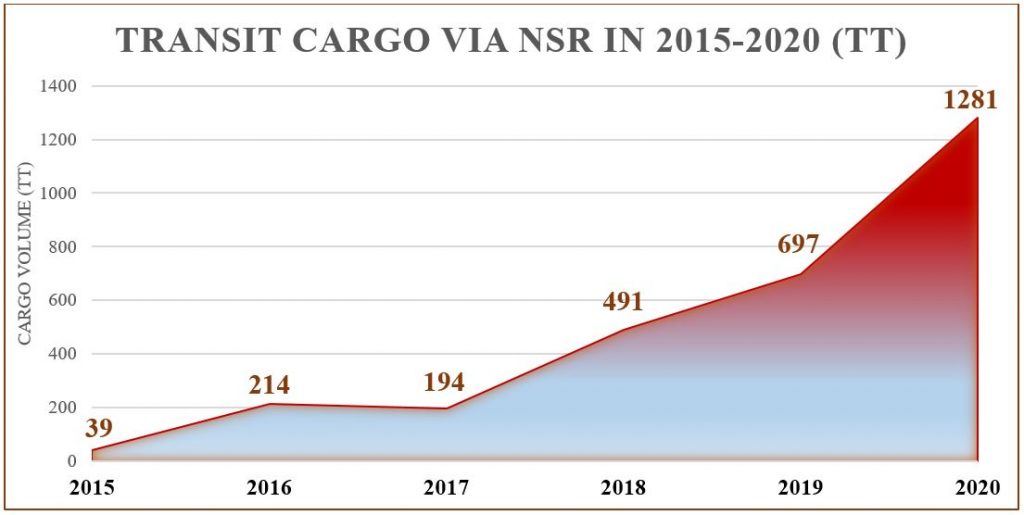NSR Shipping Traffic – Transit Voyages in 2020
The gradual and continuing growth in the number of transit voyages and their cargo volume that we have seen over the past few years has come to a sharp increase in 2020.
In 2020, transit traffic began on July 20 (entering the NSR waters) and ended on November 17 (leaving the NSR after the last transit voyage). During these incomplete 4 months, 64 voyages were made, the total volume of transported cargo amounted to 1 281 010 tons.
The main share of transported cargo belonged to iron ore concentrate (1 004 134 tons). It is worth noting the huge difference between the volume of this cargo in 2019 and 2020:
|
NSR Transit Cargo Flow 2019 vs 2020 |
||
| 2019 | 2020 | |
| Cargo Flow, t | 697 277 | 1 281 010 |
| Number of vessels | 37 | 64 |
| Dominant cargo, type / ton | Crude oil / 302 151
Iron ore / 150 172 |
Iron ore / 1 004 134 |
| Biggest vessel, t | Laden – 113 000, tanker
Ballast – 113 000, oil tanker |
Laden – 105 000, dry cargo
Ballast – 113 000, oil tanker |
Last year, there were 13 voyages with iron ore (6 from Murmansk and 7 from Nunavut, Canada). Among the ships that took part in these transportations, 3 went also in the opposite direction from east to west (return voyages). The ice class of most of these vessels is low, 6 ships have Ice 2, 3 ships have Arc 4 and 2 ships have Arc 5. The GRT of only 2 ships exceeded 65 thousand tons. The rest are from 41 to 44 thousand tons.
As for the rest of transit transportations: general cargo ships belonging to COSCO most of the other companies used routes of the NSR. A total of 8 vessels, with GRT from 22 to 26 thousand tons, made 11 voyages, from east to west and in the opposite direction. It should be noted that the return voyages were also loaded with cargo. In total, COSCO transported 198 451 tons. These were windmill equipment, wood pulp, fertilizer and other general and bulk cargo. The ports of exit and destination in Europe were in Denmark, Finland, Lithuania, Germany and Sweden.
Most of the ships passed the waters of the NSR without difficulties. The fastest of all the NSR crossed was a nuclear container ship “Sevmorput” – 5.9 days, the slowest was the ship “Callisto” – 13.8 days. Excluding these maximum and minimum values, we find out that, on average, in 2020, vessels that were in transit crossed the NSR in 8 days. At the same time, only one vessel used the icebreaker support (“Nordic Svalbard” vessel, the dates of the NSR passage late July – early August).



One Comment